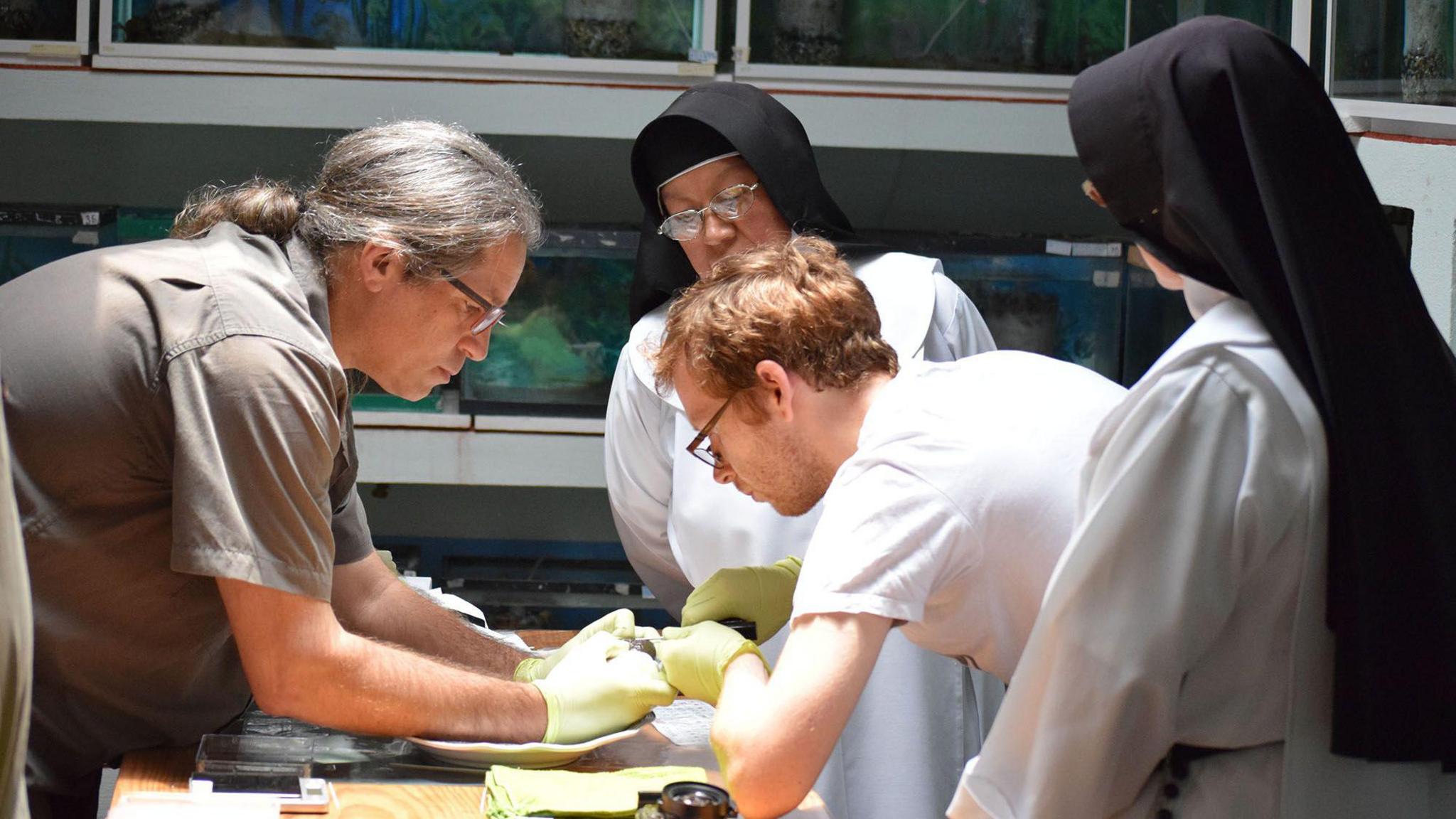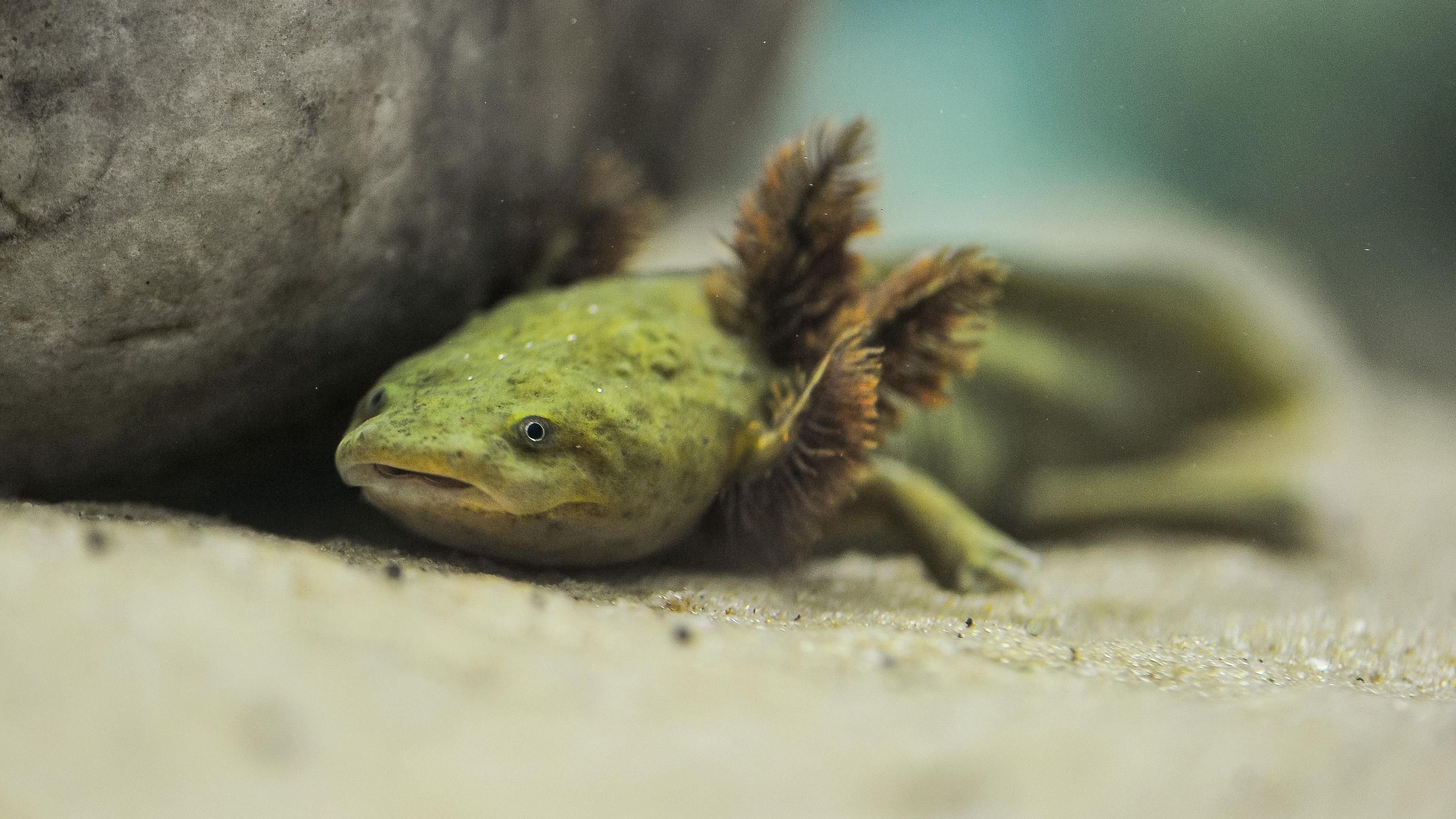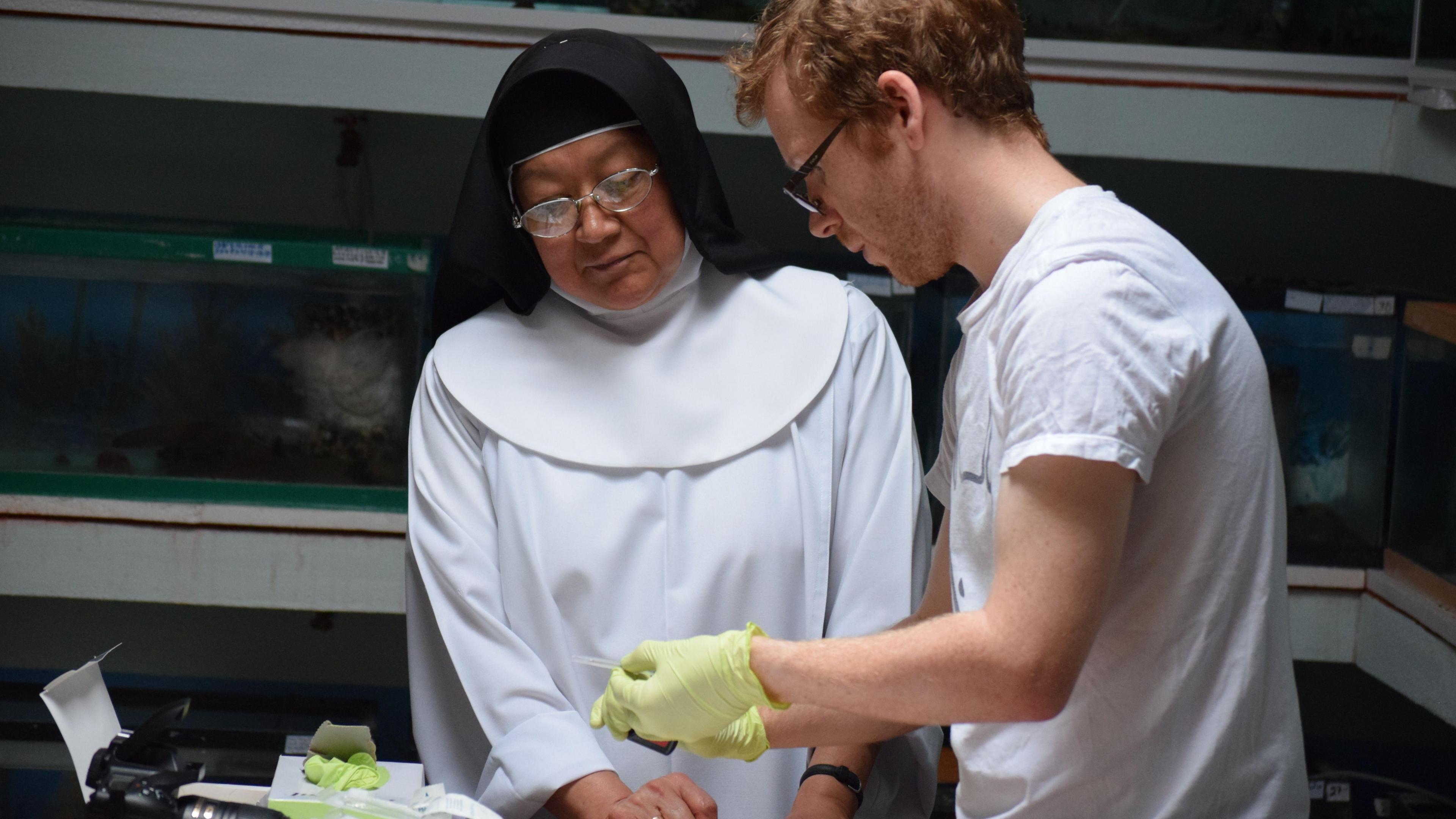Meet the salamander-saving nuns

- Published
Scientists and a convent of nuns are an unlikely team of super-heroes. However they are working together to save a really rare species of salamander.
They've developed a way to implant ID chips that are as small as a grain of rice into the achoque salamander, which lives in just one lake in Mexico.
Microchipping is an important way for scientists to track and check up on the health of animals.
However, developing this microchip has been tricky, as amphibians have been known to absorb them and poop them out or to push them out of their skin.
- Published31 January
- Published6 February 2020

Achoque salamanders are critically endangered. It is believed there are only 150 left in the wild.
Making sure the microchip worked was incredibly important, so they were first tested on captive salamanders.
Some achoques came from Chester Zoo, but others came from a convent of nuns near Lake Pátzcuaro in Mexico, which is where the amphibian lives.
The nuns started breeding achoque salamanders in the 1980s, and now hundreds live in tanks at their monastery.

Adam Bland works at Chester Zoo and is in charge of the project.
"We were chipping them with the nuns watching protectively. It's a real demonstration of how anyone can be involved in conservation".
Thanks to the team's efforts, the testing was a success.
Now, the conservationists are planning to catch and chip the wild population of achoque salamanders so that their health and population size can be reliably monitored.
